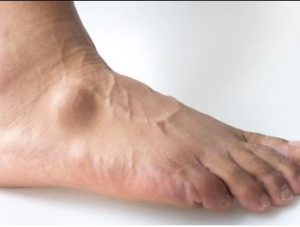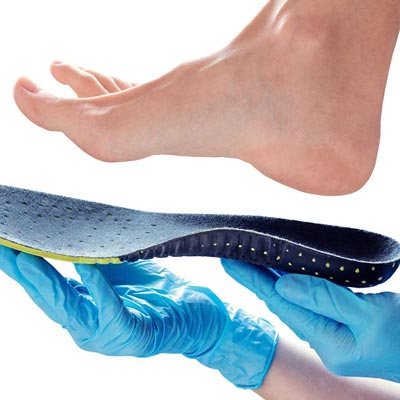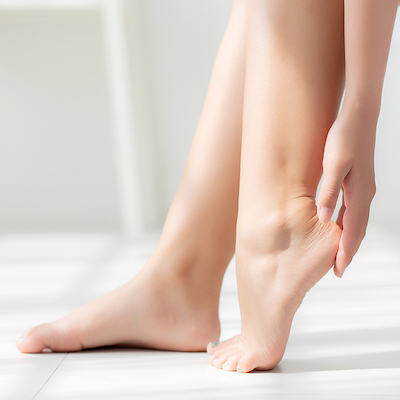Flat Feet Treatment Near Me Williams AZ
If you suffer from flat feet, also known as fallen arches, you know the discomfort and pain that can come with it. From difficulty finding comfortable shoes to experiencing foot and ankle pain regularly, flat feet can greatly affect your daily life.
But fear not! With advancements in medical technology and an increasing understanding of flat feet, there are now more treatment options available than ever before. And the best part? You can find these treatment options near you, making it easier to say goodbye to discomfort and hello to a happier, healthier life.
In this blog post, we will explore the latest flat feet treatment options available near you. From non-invasive techniques to surgical procedures, we’ll cover everything you need to know about finding relief for your flat feet. So, get ready to say goodbye to discomfort and hello to a better you!
Understanding Flat Feet
Diabetes, a chronic disease affecting millions worldwide, disrupts the body’s ability to produce or use insulin properly. This results in elevated blood sugar levels, which can have significant repercussions on various organs and systems – including the feet.
One of the most prevalent complications of diabetes is diabetic neuropathy, which causes nerve damage. As a consequence, individuals may experience numbness and tingling in their feet, rendering them less sensitive to pain or injuries. This heightened risk of foot problems means that blisters, cuts, or sores often go unnoticed, potentially leading to serious infections.
Another detrimental effect of diabetes on the feet is reduced blood flow and circulation. Elevated blood sugar levels can harm blood vessels, impeding the flow to the feet. Consequently, wounds heal more slowly, and the risk of infection becomes more pronounced. Additionally, individuals with diabetes are more susceptible to developing foot ulcers, which are challenging to treat and manage.
To mitigate these complications, individuals with diabetes must prioritize foot care. This involves daily inspections to detect any cuts, sores, or changes in skin color, shape, or temperature. Wearing well-fitting shoes and socks is essential to prevent blisters and pressure points. Regular exercise can also enhance blood flow to the feet, contributing to overall foot health. By gaining a comprehensive understanding of the impact of diabetes on their feet, individuals can proactively take measures to maintain optimal foot health and prevent severe complications.

Flat Feet Treatment
Causes of Flat Feet
Flat feet are not just limited to individuals with diabetes. While it is a common condition in babies and young children, it can also develop later in life due to various factors. These factors include genetics, foot injuries, obesity, aging, and even pregnancy. Additionally, certain medical conditions like rheumatoid arthritis or cerebral palsy can contribute to having flat feet.
- The genetic aspect plays a significant role in determining whether someone will have flat feet. It is possible to inherit the tendency from parents, making it more likely for the condition to manifest.
- Injury or trauma to the foot can also lead to flat feet. When the arch is damaged, it can cause the foot to lose its natural arch shape and result in flat feet.
- Obesity is another factor that can contribute to the development of flat feet. The excess weight puts additional pressure on the feet, causing the arches to collapse and resulting in fallen arches.
- As we age, our tendons and ligaments can weaken and stretch, leading to the arches of the feet falling. This is why flat feet can become more prevalent in older individuals.
- Pregnancy can also cause flat feet due to the increased weight and pressure on the feet. This temporary change in the arches of the feet usually resolves after pregnancy.
It is important to consult a doctor to determine the underlying cause of flat feet before deciding on a treatment option. Certain medical conditions like rheumatoid arthritis or cerebral palsy can contribute to the condition, and a professional medical opinion can help guide appropriate treatment.
Remember, flat feet are not limited to individuals with diabetes. It can occur in anyone, and understanding the potential causes can help in finding the right approach to managing the condition.
Diagnosis and Assessment
If you suspect that you have flat feet, it’s crucial to consult a doctor for a thorough diagnosis and assessment. Here’s what you can expect during your appointment:
- Physical Examination: Your doctor will carefully examine your feet, paying close attention to how they bear weight and function.
- Medical History: Be prepared to discuss any past injuries, medical conditions, or genetic factors that may contribute to your flat feet. This information will help your doctor understand your unique situation better.
- Gait Analysis: You may be asked to walk or stand on a pressure-sensitive pad while your doctor assesses your gait and weight distribution. This analysis provides valuable insights into how your feet function during movement.
- Imaging Tests: In some instances, X-rays or other imaging tests may be necessary to evaluate the structure of your foot and identify any underlying causes contributing to your flat feet. These tests help your doctor get a clearer picture of your foot’s anatomy.
- Footwear Analysis: Your doctor may also analyze the type of shoes you wear to determine if they are exacerbating your flat feet. They can provide recommendations on supportive footwear that can alleviate discomfort and promote proper foot alignment.
Once your doctor has made a proper diagnosis, they will collaborate with you to develop a tailored treatment plan that suits your specific needs and addresses any underlying causes. This may include exercises, orthotic devices, or other interventions that can help improve your foot function and overall comfort.
Taking the time to consult a doctor and receive a proper diagnosis is crucial in managing flat feet effectively. By understanding the structure and function of your feet, you can embark on a journey toward improved foot health and mobility.

Orthotic For Flat Feets
The Importance of Seeking Treatment for Flat Feet
Having flat feet may not always be uncomfortable, but it’s crucial to seek treatment if you experience any pain or symptoms. Let’s explore why seeking treatment for flat feet is so important:
- Reduce Pain and Discomfort: Flat feet can cause arch and heel pain, impacting your daily life. Seeking treatment can alleviate these symptoms and improve your overall quality of life.
- Prevent Further Complications: If left untreated, flat feet can lead to other foot problems like bunions, hammertoes, or plantar fasciitis. Treating the underlying cause of your flat feet can help prevent these complications.
- Improve Foot Function: Flat feet can affect your standing, walking, and running, potentially leading to muscle imbalances and other biomechanical issues. Seeking treatment can enhance your foot function and prevent future problems.
- Maintain Overall Foot Health: By addressing flat feet, you’re taking a proactive approach to maintaining your foot health. This is especially crucial for individuals with diabetes as it helps prevent complications.
- Enhance Mobility: Flat feet can limit your mobility and make physical activities challenging. Seeking treatment can improve your foot function, allowing for a more active lifestyle.
Remember, not all flat feet require treatment. However, if you experience discomfort or limitations, consult a doctor for a proper diagnosis and treatment. Addressing the underlying causes and improving foot function are proactive steps towards maintaining healthy feet. Taking care of your feet is essential, so don’t hesitate to seek help when needed.
Treatment Options for Flat Feet: Enhancing Foot Function and Comfort
Flat feet, a condition characterized by the absence of a visible arch in the foot, can impact daily activities and overall foot health. The type of treatment recommended for flat feet depends on the underlying cause and severity of the condition. Here are some options to consider:
- Physical Therapy: Engaging in physical therapy can be highly beneficial for individuals with flat feet. Specialized exercises and stretches can help strengthen the muscles and tendons in the feet, providing better support for fallen arches. A skilled physical therapist can tailor a program to improve foot function and alleviate discomfort.
- Orthotic Inserts: Orthotic inserts, also known as custom-made shoe inserts, offer additional support and cushioning for flat feet. These inserts are designed to distribute weight evenly, reducing discomfort while walking or standing. They can enhance foot alignment and provide much-needed relief.
- Footwear Modifications: Wearing properly fitting shoes with adequate arch support is crucial for managing flat feet. Opting for footwear that provides stability and cushioning can significantly improve foot function and alleviate symptoms. In some cases, additional modifications like arch supports or heel cups can be added to the shoes for enhanced comfort.
- Surgery: In severe cases where conservative treatments have been unsuccessful, surgery may be considered. Surgical interventions aim to correct the arch and improve foot function. However, it’s important to note that surgery is typically reserved as a last resort when all other treatment methods have been exhausted.
Consulting a medical professional is essential before embarking on any treatment plan for flat feet. They can properly assess the underlying cause and severity of the condition and recommend the best course of action tailored to individual needs.
Addressing flat feet requires a comprehensive approach that focuses on strengthening, support, and proper footwear. By incorporating these treatment options, individuals with flat feet can enhance foot function, alleviate discomfort, and improve overall quality of life.

Flat Feet Treatment Williams AZ
Emerging Treatments for Flat Feet: What the Future Holds
The foot treatments are always evolving, and ongoing research is leading to exciting new treatments for flat feet. Let’s explore some emerging options that could soon become more widely available:
- Stem Cell Therapy: One of the most promising developments in treating flat feet is stem cell therapy. This innovative approach involves extracting healthy cells from the patient’s own body, typically from bone marrow or fat tissue, and injecting them into the affected area. By doing so, damaged tissues, including those in the arch of the foot, can be regenerated.
- 3D Printed Orthotics: Thanks to advancements in technology, 3D printing has become more accessible for creating custom orthotic inserts. By scanning the individual’s foot, a 3D printer can produce inserts that provide a precise fit, ensuring optimal support and comfort.
- Minimally Invasive Surgery: In the past, surgery for flat feet was a major procedure that required a lengthy recovery period. However, researchers are now developing minimally invasive techniques that involve smaller incisions and less disturbance to the surrounding tissues. This not only leads to a faster recovery but also improves the overall outcome of the surgery.
While these treatments show great promise, it’s important to note that further research and testing are still needed before they become widely available. Nonetheless, the potential for these advancements to effectively treat flat feet and improve foot function is truly exciting.
Managing flat feet can be challenging, but there are various treatment options available to enhance foot function and provide relief. These may include physical therapy, customized orthotic inserts, proper footwear, and in some cases, surgery. By combining these approaches, individuals with flat feet can effectively manage their condition and significantly improve their quality of life.
With ongoing advancements in the field, the future looks bright for individuals struggling with flat feet. Stay informed and consult with medical professionals to explore the best treatment options for your specific needs.
Finding Flat Feet Treatment Options Near You
Dealing with discomfort or limitations caused by flat feet? Don’t worry! Seeking treatment is key to keeping your feet healthy and maintaining an active lifestyle. Check out these awesome tips to help you find the perfect treatment options near Williams AZ:
- Start with your primary care physician: Reach out to your regular doctor and discuss your concerns. They can connect you with specialists who can diagnose and treat flat feet like pros!
- Look for specialized clinics: Explore clinics or centers in your area that specialize in foot conditions. These places usually have a team of experts, including podiatrists and physical therapists, who can create personalized treatment plans just for you.
- Get recommendations: Don’t hesitate to ask family and friends who have dealt with flat feet for their healthcare provider or clinic recommendations. Personal experiences can be valuable when making decisions about your health.
- Harness the power of online resources: The internet is your friend! Take advantage of medical directories, patient reviews, and credible sources to find treatment options that suit your needs. Do thorough research and make informed choices.
- Second opinions matter: If you’re unsure about a recommended treatment plan, seek a second opinion from another healthcare professional. It’s important to find the best option for your unique situation and feel confident in your choices.
Remember, it’s crucial to consult with a medical professional before starting any treatment plan, as everyone’s needs may vary. With proper care and management, flat feet won’t hold you back from living an active and fulfilling life. Explore treatment options near you today, and embrace the activities you love with confidence!
